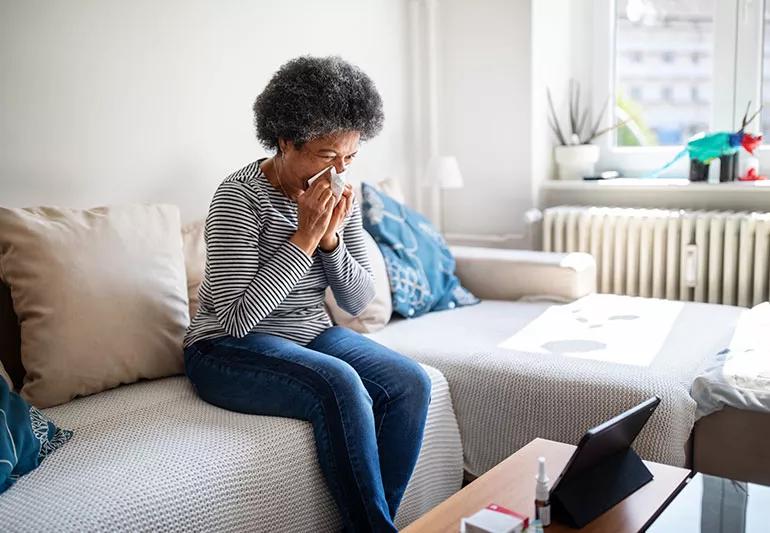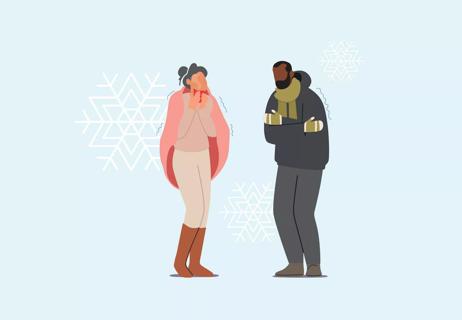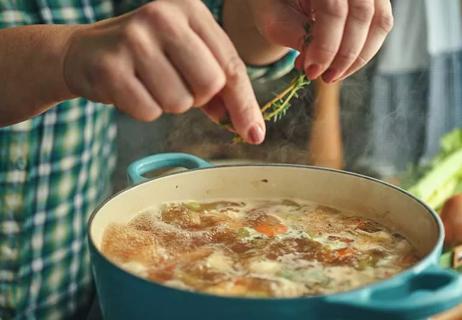If it feels like everybody’s got the sniffles, here’s what’s going on

When the pandemic descended, we all tried our best to fend off COVID-19 by adopting precautions like masking, increased hand-washing and extreme social distancing. And something else happened: We mostly kept the common cold at bay, too.
Advertisement
Cleveland Clinic is a non-profit academic medical center. Advertising on our site helps support our mission. We do not endorse non-Cleveland Clinic products or services. Policy
Now, though, as pandemic-related restrictions have eased, colds and other sniffles are on the rise again. Primary care specialist Neha Vyas, MD, explains what’s happening and how to stay healthy.
Common viruses include:
But during peak pandemic quarantine — as kids were home from school, employees worked remotely and travel opportunities were significantly limited — there were fewer opportunities to get sick, especially when paired with societal and individual safeguards to ward off COVID-19.
One study showed broad decreases in the overall numbers of respiratory illnesses, including those requiring emergency department visits (excluding COVID-19), reported during 2020. And according to the Centers for Disease Control and Prevention, cases for the 2020-2021 flu season were unusually low.
That doesn’t mean nobody got a cold during the pandemic, but COVID-19 safety measures are largely considered to have helped drive down standard germy sickness, too.
As pandemic restrictions have eased, everyday germs have found their way back into the mainstream. Doctors are seeing more colds and respiratory illnesses this year than in the past, Dr. Vyas says.
Advertisement
“I think part of it is due to the easing of pandemic restrictions,” she says. “We’re not social distancing as much as we were, we don’t wear our masks as often as we did, and we are now meeting people in more crowded spaces.”
The reopening of daycares surely plays a role, as well, as common “daycare diseases” include colds and upper respiratory infections, pink eye and stomach flu — which kids contract and then bring home to their families.
After a year spent in quarantine and general isolation, you may fear that your body has lost its ability to fight off common illnesses like colds — but there’s no need to worry.
“Most of us have very good immune systems, and our body has a very good natural response,” Dr. Vyas reassures.
The best way to ward off colds is to keep doing what we’ve been doing since the pandemic began: being careful and keeping your immune system strong.
“Be vigilant about when you’ve touched surfaces, and be sure to wash your hands before touching your face or eating,” Dr. Vyas says. “And the number one thing is to make sure you’re vaccinated against both COVID-19 and influenza.”
And don’t toss those masks just yet. Even if you’re fully vaccinated from COVID-19, wearing a face mask can help protect you from other germs, too. Keep one in your pocket or your handbag to slip on when you’re in a crowded area.
“You’re protected and you’re protecting others, as well,” Dr. Vyas says.
The best way to treat a cold is by doing what’s always worked. “Try to stay away from people and keep your germs to yourself,” Dr. Vyas advises.
If you have symptoms for more than a week or have an already compromised immune system, contact your doctor.
Advertisement
Learn more about our editorial process.
Advertisement

Symptoms can overlap and be hard to distinguish, but there are some telltale differences

The flu, RSV, COVID-19, pneumonia and more typically circulate during cold weather months

The advice dates to 1574, but it doesn’t quite meet modern medical guidelines

Ultimately, the best medicine for a cold is time, fluids and rest

From garlic to elderberry, here’s how not to get rid of a cold

Colder temps bring flu worries, fall allergies, dry skin and more

You can’t cure it, but you can manage the symptoms

Here’s one TikTok trend you shouldn’t try

Type 2 diabetes isn’t inevitable with these dietary changes

Applying a hot or cold compress can help with pain